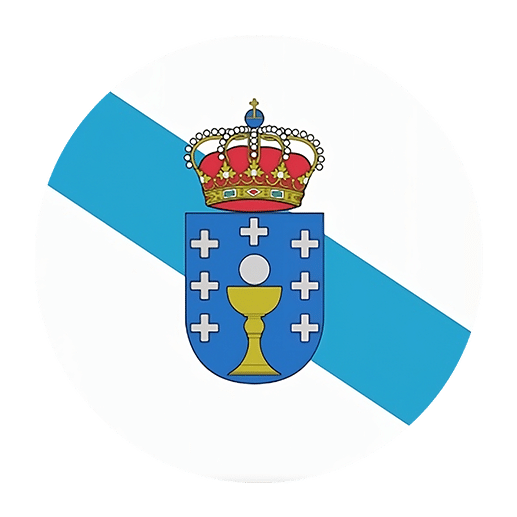Relative clauses are an essential component of many languages, including Galician, a Romance language spoken primarily in the region of Galicia in northwestern Spain. Understanding how to use relative clauses effectively can significantly enhance your proficiency in Galician, enabling you to construct more complex and meaningful sentences. This article will provide a comprehensive overview of relative clauses in Galician grammar, catering specifically to English speakers looking to deepen their understanding of this beautiful language.
Relative clauses, also known as adjective clauses, are subordinate clauses that provide additional information about a noun or pronoun in the main clause. In Galician, relative clauses function similarly to their English counterparts but with some differences in structure and usage. By exploring these nuances, you will gain a clearer insight into constructing relative clauses accurately in Galician.
Basic Structure of Relative Clauses in Galician
Relative clauses in Galician, like in English, are introduced by relative pronouns. The primary relative pronouns in Galician are “que,” “quen,” “o cal,” “a cal,” “os cales,” and “as cales.” Each of these pronouns serves a specific function and agrees in gender and number with the noun it refers to.
Que: The most commonly used relative pronoun in Galician is “que.” It is an invariable pronoun, meaning it does not change based on gender or number. “Que” can refer to both people and things and is used in both restrictive and non-restrictive relative clauses.
Example:
– O libro que estou lendo é moi interesante. (The book that I am reading is very interesting.)
– A muller que falou onte é a miña tía. (The woman who spoke yesterday is my aunt.)
Quen: The relative pronoun “quen” is used exclusively for people and is typically employed in non-restrictive relative clauses. It often translates to “who” or “whom” in English.
Example:
– O profesor, quen é moi amable, axudoume moito. (The teacher, who is very kind, helped me a lot.)
O cal, a cal, os cales, as cales: These relative pronouns are used to refer to both people and things. They agree in gender and number with the noun they refer to and are often used in more formal or written contexts. They correspond to “which,” “who,” or “whom” in English.
Example:
– A casa, a cal está preto da praia, é moi bonita. (The house, which is near the beach, is very beautiful.)
– Os estudantes, os cales traballaron duro, pasaron o exame. (The students, who worked hard, passed the exam.)
Restrictive vs. Non-Restrictive Relative Clauses
Understanding the distinction between restrictive and non-restrictive relative clauses is crucial in both English and Galician. Restrictive relative clauses provide essential information that defines or identifies the noun they modify, while non-restrictive relative clauses offer additional, non-essential information.
Restrictive Relative Clauses:
– These clauses are essential to the meaning of the sentence and are not set off by commas.
– In Galician, they are often introduced by “que.”
Example:
– Os libros que están na mesa son meus. (The books that are on the table are mine.)
– Here, “que están na mesa” is a restrictive relative clause because it specifies which books are being referred to.
Non-Restrictive Relative Clauses:
– These clauses provide extra information and are set off by commas.
– In Galician, they can be introduced by “quen” (for people) or “o cal,” “a cal,” “os cales,” “as cales” (for both people and things).
Example:
– A miña nai, quen vive en Santiago, vén visitarme. (My mother, who lives in Santiago, is coming to visit me.)
– Here, “quen vive en Santiago” is a non-restrictive relative clause that adds additional information about the speaker’s mother.
Usage of Relative Pronouns in Different Contexts
To gain a more nuanced understanding of relative clauses in Galician, it’s essential to explore how different relative pronouns are used in various contexts. This section will delve into specific scenarios and provide examples to illustrate the correct usage.
Relative Pronoun “Que”:
– As mentioned earlier, “que” is the most versatile relative pronoun in Galician and can refer to both people and things. It is used in both restrictive and non-restrictive clauses.
– When “que” refers to a person and is the object of the verb in the relative clause, a preposition is often placed before it.
Example:
– A persoa de que che falei é moi simpática. (The person whom I told you about is very nice.)
Relative Pronoun “Quen”:
– “Quen” is primarily used in non-restrictive clauses to refer to people. It often follows a comma and provides additional information about the subject.
Example:
– O meu amigo, quen é médico, está de vacacións. (My friend, who is a doctor, is on vacation.)
Relative Pronouns “O cal,” “A cal,” “Os cales,” “As cales”:
– These pronouns are more formal and are used to refer to both people and things. They agree in gender and number with the antecedent and are often used after prepositions.
Example:
– A cidade na cal nacín é moi fermosa. (The city in which I was born is very beautiful.)
– Os rapaces cos cales xogamos ao fútbol son moi bos. (The boys with whom we played football are very good.)
Omission of Relative Pronouns
In some cases, relative pronouns can be omitted in Galician, similar to English. However, the rules for omission are more restrictive in Galician.
Omission in Subject Position:
– Unlike English, where relative pronouns in subject position can sometimes be omitted, in Galician, they cannot be omitted.
Example:
– Incorrect: A muller que vive ao lado é moi simpática.
– Correct: A muller vive ao lado é moi simpática. (The woman who lives next door is very nice.)
Omission in Object Position:
– Relative pronouns in object position can be omitted in restrictive relative clauses in Galician, particularly when “que” is used.
Example:
– O libro (que) estou lendo é moi interesante. (The book (that) I am reading is very interesting.)
Relative Adverbs in Galician
In addition to relative pronouns, Galician also uses relative adverbs to introduce relative clauses. The most common relative adverbs are “onde” (where), “cando” (when), and “como” (how). These adverbs provide additional context about the location, time, or manner of the action described in the relative clause.
Onde:
– “Onde” is used to refer to a place and corresponds to “where” in English.
Example:
– A cidade onde vivo é moi fermosa. (The city where I live is very beautiful.)
Cando:
– “Cando” refers to a specific time and translates to “when” in English.
Example:
– O día cando nos coñecemos foi inesquecible. (The day when we met was unforgettable.)
Como:
– “Como” describes the manner in which something is done and corresponds to “how” in English.
Example:
– A maneira como fixo iso foi impresionante. (The way how he did that was impressive.)
Relative Clauses with Prepositions
In Galician, as in English, relative clauses can involve prepositions. When a relative pronoun is the object of a preposition, the preposition typically appears before the relative pronoun. This is a key difference from English, where the preposition can sometimes be placed at the end of the clause.
Using “Que” with Prepositions:
– When “que” is used as the object of a preposition, the preposition must precede “que.”
Example:
– A cidade de que che falei é moi fermosa. (The city about which I told you is very beautiful.)
Using “O cal,” “A cal,” “Os cales,” “As cales” with Prepositions:
– These relative pronouns also follow the preposition.
Example:
– A amiga coa cal falei é moi simpática. (The friend with whom I spoke is very nice.)
Common Mistakes and Tips
Learning to use relative clauses in Galician effectively requires practice and attention to detail. Here are some common mistakes to watch out for, along with tips to help you master relative clauses.
Common Mistakes:
1. Misplacing Prepositions: Ensure that prepositions are placed correctly before the relative pronoun.
– Incorrect: A cidade que falei de é moi fermosa.
– Correct: A cidade de que falei é moi fermosa.
2. Incorrect Agreement: Make sure that relative pronouns agree in gender and number with their antecedents.
– Incorrect: A casa, o cal está preto da praia, é moi bonita.
– Correct: A casa, a cal está preto da praia, é moi bonita.
3. Omitting Relative Pronouns in Subject Position: Remember that relative pronouns in subject position cannot be omitted in Galician.
– Incorrect: A muller vive ao lado é moi simpática.
– Correct: A muller que vive ao lado é moi simpática.
Tips for Mastery:
1. Practice with Examples: Review and practice with various examples to become familiar with different relative pronouns and their usage.
2. Read in Galician: Reading books, articles, or other materials in Galician can help you see how native speakers use relative clauses.
3. Write and Speak: Practice writing sentences with relative clauses and try to incorporate them into your spoken Galician to reinforce your learning.
4. Seek Feedback: If possible, seek feedback from native speakers or language instructors to correct any mistakes and improve your skills.
Conclusion
Mastering relative clauses in Galician is a significant step towards achieving fluency in the language. By understanding the basic structure, differentiating between restrictive and non-restrictive clauses, using relative pronouns and adverbs correctly, and practicing regularly, you can enhance your ability to construct complex and meaningful sentences in Galician. Remember that language learning is a gradual process, and consistent practice will yield the best results. Embrace the beauty of the Galician language and enjoy the journey of becoming more proficient in its grammar and nuances.

